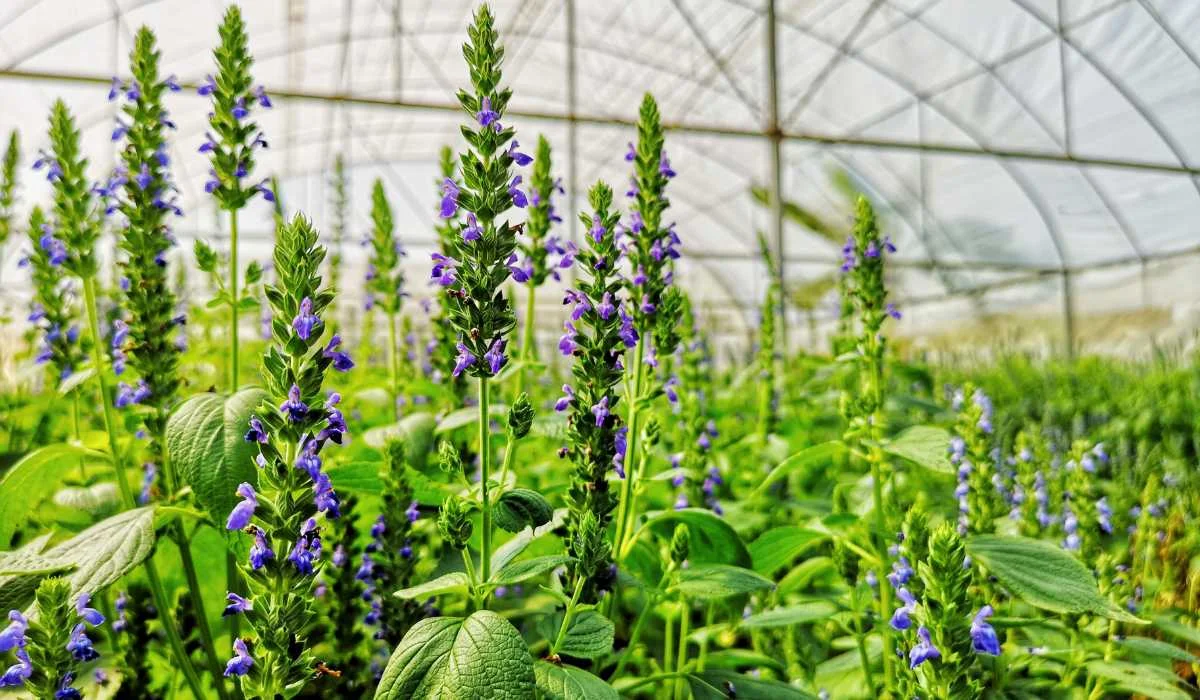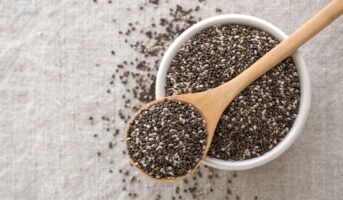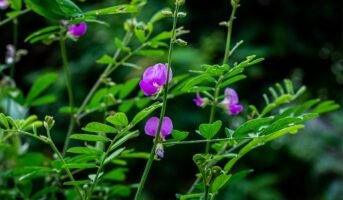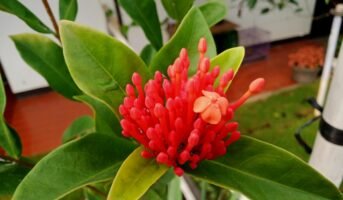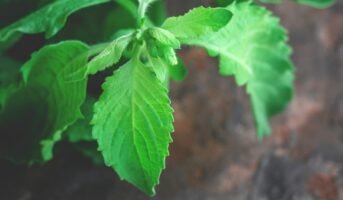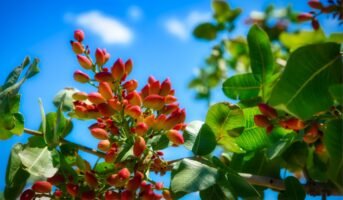Chia seeds have recently gained popularity due to their extensive nutritional and health benefits. And, we hear of them all too often because of their highly advertised nutritional value. In this guide, we will understand what they really are and if you can grow them at home.
What are Chia seeds?
Chia is a warm-climate annual herb that is indigenous to Mexico and Guatemala. The name is derived from a Mayan word that means “strength” and an Aztec word that means “oily”.
Its botanical name, Salvia hispanica, also refers to it. The largest genus in the Lamiaceae, or mint, family is salvia. As with many mint plants, these types are known for their assertive growth and, in some cases, aggressive spread.
Once established, chia plants require hardly any care. Flowers form on spikes resembling wheat on stalks that can reach a height of five feet. The tiny, bell-shaped, violet-blue flowers that bloom from late spring to early summer are aesthetically pleasing. Although the plant has some ornamental value, the true star quality of chia lies in its seeds.
See also: Are chia seeds worth all the rage?
Types of Chia seeds
Even though the magic seed comes in several colours like black, white, gray and brown, there is only one type of Chia seed. This means that the nutritional content of varieties is similar. Black Chia seeds are the most commonly available and used type of Chia seeds. Black Chia seeds have slightly more protein content while white chia seeds have slightly more Omega3s.
Chia seeds plant: Key facts
| Common name | Chia |
| Botanical name | Salvia hispanica |
| Family | Lamiaceae |
| Mature size | 5 foot |
| Sun | Full sun |
| Soil | Prefers clay or sandy |
| Bloom time | Early summer |
See also: all about Flaxseed, Fact, Benefits, and Uses
Chia seeds plant: Features
Chia (Salvia hispanica) belongs to the mint family, Lamiaceae. Including Chia in your landscaping gives bees and butterflies a great nectar supply. These herbaceous perennials reach a height of 3 feet (91 cm.). They feature thick, dark green, wrinkled, and deeply lobed leaves. Additionally, tiny, silky, grey hairs cover the upper surface of the leaves.
Chia seeds plant: How to propagate?
Home gardeners can germinate chia seeds in a clay dish on a windowsill before transplanting them into the yard because chia plants are very robust. While resilience is one of the chia plant’s most prominent traits, the following step-by-step growing instructions will provide your chia garden with optimal circumstances for growth.
- As plants that can reach heights of five feet, chia plants require full sun and adequate area to thrive. Choose a planting location with enough space and at least six hours of daily direct sunlight.
- Prepare the soil. Chia plants thrive in a variety of soil types, but clay or sandy soils with excellent drainage are ideal. Use a commercial growing mix that has a little bit of sand added to it if you are growing your chia plants in pots. For optimal moisture absorption, use terracotta pots that have not been glazed.
- Plant the seeds: Scatter the tiny seeds just beneath the thin soil’s surface.
- Daily watering is beneficial for the drought-tolerant, mucilaginous seeds of the chia plant until the sprouts develop roots. Once they have reached the height of alfalfa sprouts or microgreens, natural precipitation should be adequate.
- To harvest the seeds, wait until most of the petals have fallen off the blooms, and then remove the flower heads from the stalk. To dry the flower heads, place them in a paper bag or paper towel. After the flower heads have sufficiently dried, crush them with your hands or a paper bag to separate the seeds.
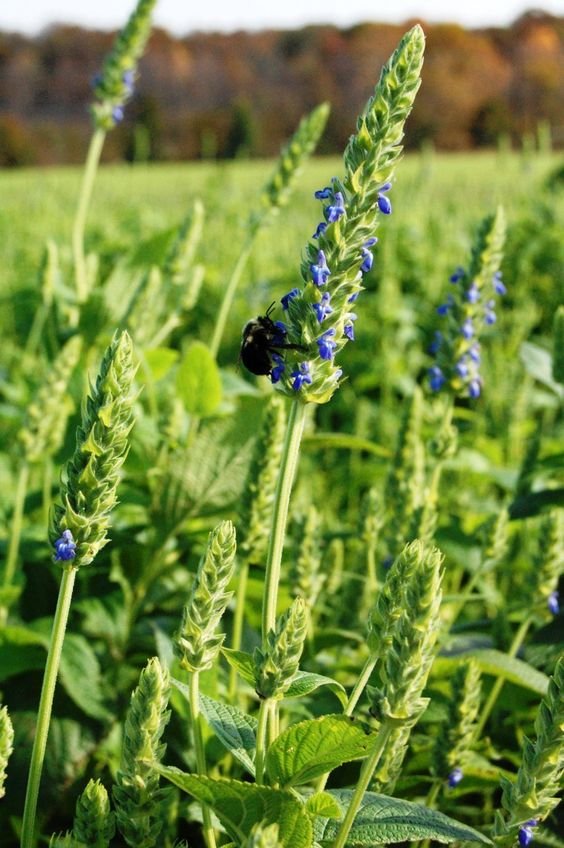
Source: Pinterest
How to grow Chia seeds without soil?
- Clean a plastic tray.
- Pour one spoonful of chia seeds and one spoonful of water on the tray.
- Drain the water in about one hour.
- Cover the tray to trap the moisture.
- In 4 days, the seeds should start to sprout.
- When the sprouts are about 6.35 mm, expose them to direct sunlight so that they can turn green.
Other ways to grow Chia seeds
- Terra cotta tray method
- Spray and tray method
- Chia pet method
- Wide-mouth jar method
- Jiffy pot method
- Paper towel method
- Nylon or linen method
Chia seeds plant: Maintenance
Chia plant maintenance is simple. Not only is the desert plant drought-tolerant, but it is also renowned as a “fire following” plant, which means it is one of the first to return after a disastrous wildfire. After the plants have been established in well-drained soil, water them infrequently. Chia plants are so versatile that they can self-pollinate in the absence of bees or butterflies, and they will self-sow the next autumn if they survive the predation of birds, insects, and animals.
Light
Chia plants thrive in bright, direct sunlight. Even on the hottest days of summer, they can handle the heat better than most things.
Soil
These plants are able to thrive in a wide variety of soil types thanks to their high adaptability. Even though the soil in their native places is often sandy, they are able to thrive in clay soils as well. Chia plants, on the other hand, do not like to be kept in conditions that are excessively wet for an extended period of time.
Water
Chia plants can withhold long periods of water deprivation. They thrive best when given consistent watering until they are well-established, after which they may require very little to no extra watering because of their tendency to adapt to a wide variety of environments.
Fertiliser
If you desire an organic yield, you should avoid using synthetic fertilisers. At the time of planting, add mature compost, worm castings, or manure to increase the yield. During mid-growth, you can also side-dress the soil with organic fertilisers.
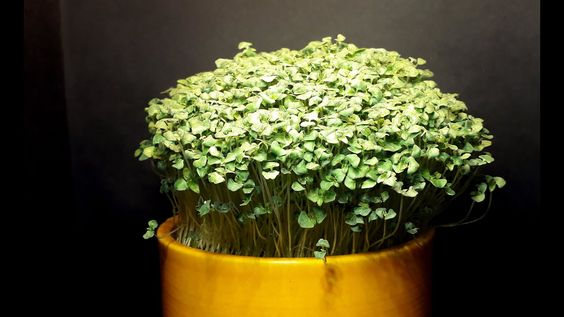
Source: Pinterest
Chia seeds plant: Uses and benefits
- They contain antioxidant chemicals, such as quercetin. It is believed that these chemicals lessen the risk of cancer and other disorders, including cardiovascular disease.
- Antioxidants also extend the shelf life of chia seeds, as they prevent rancidity, which is a potential issue when storing other oil-producing seeds.
- Additionally, chia seeds are rich in fibre, high-quality protein, and omega-3 fatty acids. These seeds can improve bone strength.
- These seeds are widely used in cereal, granola bars, yoghurt, and baked products for their heart-healthy properties.
- They are commonly added to smoothies to improve their nutritional value.
Chia seeds plant: Toxicity
- Chia seed allergies are uncommon; however, they have been recorded.
- Symptoms of a food allergy may include vomiting, diarrhoea, and itchy lips or tongue.
- In extreme cases, food allergies can cause anaphylaxis, a potentially fatal condition characterised by trouble breathing and tightness in the throat and chest.
FAQs
What happens if you consume chia seeds daily?
Chia seeds contain quercetin which can reduce your risk of getting multiple diseases, including heart disease.
Can chia seeds decrease abdominal fat?
According to studies, consuming chia seeds lowers visceral adipose tissues, generally known as abdominal fat.
Housing News Desk is the news desk of leading online real estate portal, Housing.com. Housing News Desk focuses on a variety of topics such as real estate laws, taxes, current news, property trends, home loans, rentals, décor, green homes, home improvement, etc. The main objective of the news desk, is to cover the real estate sector from the perspective of providing information that is useful to the end-user.
Facebook: https://www.facebook.com/housing.com/
Twitter: https://twitter.com/Housing
Email: [email protected]
